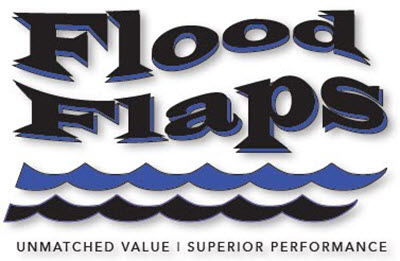Ways to deal with floods
Published Date Tuesday, 01 September 2015 15:26Written by Dan Miller
Concerns about flooding and what to do about it are easy to find in Middletown.
So many people have their own unique flood story.
It isn’t just about 2011 and Tropical Storm Lee. For folks like Mark Shipkowski, flooding is far more routine.
But even after 30 years of living in the town, Shipkowski doesn’t accept that this is how it has to be just because it has always been this way.
So when officials from Dauphin County offered the possibility of change, Shipkowski happily took them up on their offer.
He and about 19 other borough residents attended a meeting that the county held in the MCSO Building on Wednesday, Aug. 26 to get ideas from citizens on how to combat flooding and make Dauphin County more “resilient” in preventing, and recovering from, a disaster.

Officials hope that the suggestions from Shipkowski and others can increase Dauphin County’s odds of getting up to $500 million in grant funds offered through the National Disaster Resilience Competition, a joint effort of the federal Department of Housing and Urban Development (HUD) and the Rockefeller Foundation. The county application is among 40 that have made it through the first round of HUD scrutiny.
Flooding is the type of disaster to which Middletown and Dauphin County residents are most susceptible. But the national competition is much broader, as it seeks to assess how well a region can respond to disaster based upon a range of quality-of-life issues such as crime, housing, the environment and economic development and employment.
For Wednesday’s meeting, planners set up large easels with identical maps of the county around the baskektball court-sized room. Each easel represented a category for public input for the grant competition. For example, residents who wanted to talk about housing needs in Dauphin County went to the easel marked “housing.” The informal nature of the meeting allowed people to make suggestions at all of the easels if they wished.
Shipkowski headed right for the easel marked “infrastructure.” He and his wife, Kathy, live on Hoffer Street. They were joined by their next-door neighbor, JoAnn Shipkowski, who is Mark’s sister.
Mark pointed out that anytime a lot of rain falls in a short period, water backs up from the stormwater grates and turns his backyard into a pond deep enough to travel by canoe.
“Basically we are at the end of the line where all the water comes off Adelia Street, down Hoffer Street back to Few Avenue. We’re the last line of where the water would go, and it’s been a problem,” he said. He has seen improvement since the 2011 flooding. But Shipkowski believes more can be done, such as increasing capacity of the storm sewer system.
Another reoccurring issue is the Route 230 bridge passing over Swatara Creek on the east end of town. Debris and other obstructions – man-made and natural – get stuck under the bridge, impede the flow of water and make the flooding in town worse, Shipkowski said.
The Pennsylvania Department of Transportation soon plans to replace the bridge. When it does, Shipkowski hopes the state will fix this problem.
Another issue he brought up is directly tied to the 2011 flooding: A large number of homes near where Shipkowski lives were bought out and removed. Nothing has been done with the land since, he said. He believes the empty ground would be great for athletic fields and a park.
“We need to revitalize the neighborhood so people want to come down our street again,” Shipkowski said. Tom Germak arrived carrying a yellow legal pad and a newspaper clipping, showing a photo from 2011 of Germak’s electrical business being flooded out. His business is also in the east end of town, a stone’s throw from the Route 230 bridge over Swatara Creek.
“We went to great pains to elevate everything about the 100-year flood plain, and we had a 500-year flood event,’’ Germak said. “Nobody saw it coming, from the local, the county, the state, the federal government. Never saw it coming.”
There are stream gauges along about every 10-mile increment of the Swatara Creek. However, most of them weren’t working during the 2011 flood because of budget cuts, Germak said.
Flood insurance premiums have skyrocketed since 2011 for businesses and residences throughout Dauphin County. Many of these properties are unsellable as a result of the high premium, Germak said.
“I’d like to see a subsidy on the flood insurance,’’ he said. “They subsidize everything else, send money to Iraq, Afghanistan, whatever. How about the people of this country?”
Another resident suggested the federal government allow property owners to make partial payments on their flood insurance premium instead of having to pay the entire premium at once as now.
Germak said the government needs to come up with better ways to provide residents and businesses with basic information on what to do about flooding – both on preventive measures and how to reduce the damage from flooding when it occurs.
“That would be a start,” Germak said. “I’d like to think I know where to go, but when you go to officials and they don’t know, there’s a breakdown somewhere.”
Dauphin County so far has identified $197 million in “unmet” needs through the HUD resiliency grant process, said George Connor, deputy director of the county Office of Community and Economic Development.
The county has not yet decided how much money it will apply for in the grant competition.
“We’ll know closer to the Oct. 27 deadline” for the county to submit its application to the National Disaster Resilience Competition, Connor said.
Here are some other suggestions that Middletown residents had for fighting flooding and for making the county more resilient to disaster during the meeting:
• Remove obstructions in the Swatara Creek and dredge the mouth of the creek.
• Reduce run-off from agricultural land.
• Keep stormwater sewer drains clear and improve stormwater sewer maintenance.
• Elevate properties in flood zones and encourage construction of “tiny houses” for people who are downsizing.
• Increase radio alerts during a flood.
• Reduce the impact of new development upon flooding and run-off.
• Plant trees in areas where properties have been demolished due to flooding.
• Encourage rainwater harvesting on roads.
Ways to deal with floods



